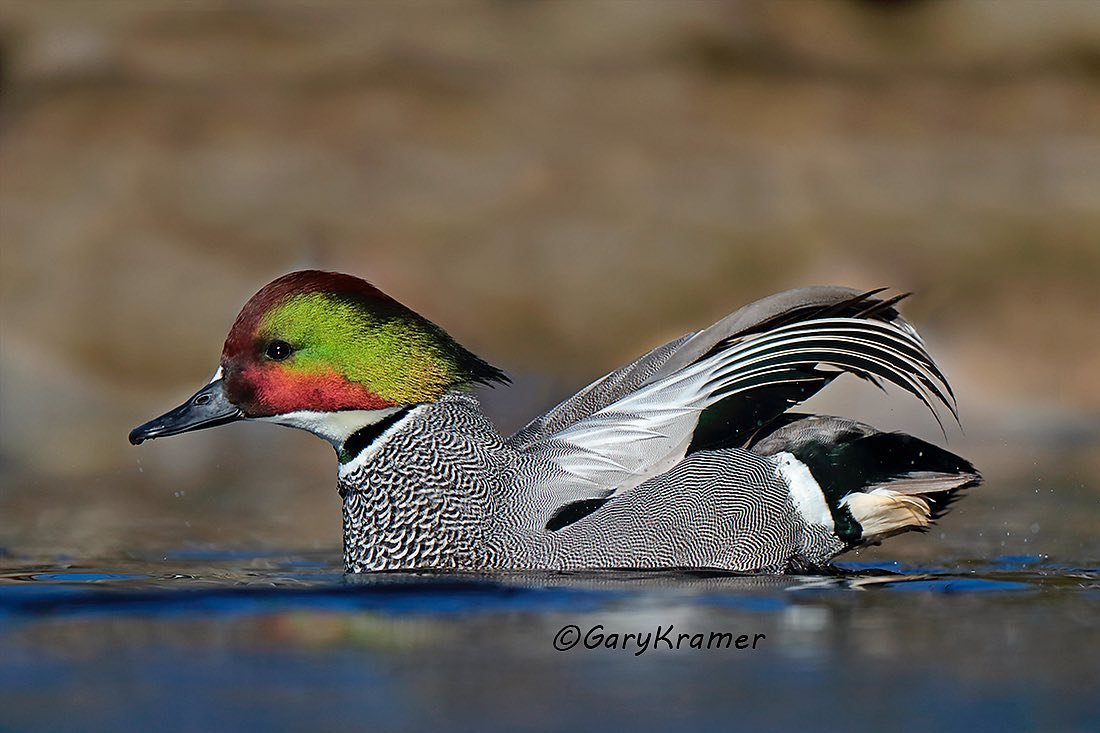Waterfowl of the World
Shawn Swearingen for SPLIT REED
Photos Courtesy of Gary Kramer
“That’s a pintail, right?”, my eight-year-old asks as he admires the cover. Since receiving a copy of what will be regarded as the seminal resource for waterfowl species, we have been cover-to-cover learning and discussing different types of ducks and geese together. The beautifully printed book is just as filled with knowledge about the species as it is stunning to look over. I’ve had the pleasure to learn and share a bit more about how it all came together with Gary Kramer.
Gary has been a waterfowl biologist for 45 years and a photographer for 35 of those years. Pursuing these birds has now taken him across the world to photograph and document all of the species of waterfowl [exception of one thanks to the French Government, more on that later], endangered or otherwise. What had started out as a coffee table book idea, which is a very hefty one at that, Waterfowl of the World can also be accurately described as a scientific resource document. Each species is a chapter, all 167 of them, and each one has been peer-reviewed by waterfowl biologists and researchers for accuracy.
“A book like this could not have been done previously for a few reasons, the first being because of digital photography. Due to the low light situations in which you find birds, the older technology wouldn't be able to capture them. The second is thanks to the internet. Without it, finding bird watchers or other types of local guides wouldn’t be possible.” Gary notes that there was another book completed by Frank Todd in 1997, Natural History of the Waterfowl, that covered all of the known species at that time but did not include species that were once thought to be extinct as well as the improvement in photography of the species since then. “In a span of 36 months, I was in 40 different international locations, traveling more than 300,000 miles. Just from the logistical standpoint of weather, research, and finding local knowledge the internet aided greatly.”
His stories of travels and adventures would be a great and lengthy read in itself, some of which are relayed in the ‘Photographer’s Notes’ of the book. Gary relates that it was a balance of not just finding the birds, but being in the right position at the right time to get the photographic documentation he needed. “In some places I connected with bird watchers, who were helpful in the tracking, and locating waterfowl but often pointed out birds at long distances. Then it was my job to get within 20 to 50 yards for photos.”
“For the Madagascar pochard, there are only about 70 in the wild. It took me 6 days to get there traveling by air and vehicle. When I got there I got all the shots I needed because they were accustomed to the yellow kayak that the local research group used to observe them.’’
“On the other side of the coin, I spent 60 hours in a riverside blind for four minutes of photographing two birds. The Salvadori’s teal in Papua New Guinea wasn’t photographed at what I would call a professional quality level before. The ones that had been taken were through a spotting scope from a long distance so the images I found available were not in high resolution or they were blurry. This species lives in remote, dense jungle river canyons. We had found a pair on the first day driving the road system, but when we got out of the car they flushed. They are shot for their feathers or for food by those that live there so they are very wary of that pressure. The plan was to set up in a blind on the river where they were seen previously in hopes they would come back, and eventually they did.”
The only bird that he was not able to photograph himself was the Eaton’s Pintail which is located on the remote island group of Crozet and Kerguelen, only accessed via a supply boat controlled by the French government. Through numerous attempts through the French Consulate and the French agencies in charge of the research station, his attempt to get a seat on the boat was to no avail. If you catch it, Gary does a special shoutout to the French who were unresponsive, uncooperative as well as short-sighted of these conservation efforts.
In addition to the stunning images, each species and chapter includes biological information, habitat, and conservation status. Information that is critical to a complete understanding and connection of waterfowl species to the natural world.
Thanks to the help of other waterfowl biologists and organizations like California Waterfowl Association (CWA), Ducks Unlimited, and Delta Waterfowl, opportunities abound for you to not only hunt but observe some of these species yourself year-around. You can get your copy of the Waterfowl of the World on Gary’s website, as well as on the CWA website. Purchase of the book goes to not only underwriting his travel expenses in putting the book together but also directly to organizations like the CWA. “This is really a culmination of my life’s work. To be able to give and provide something back is an honor.”
Gary stated, “I look at the book now and kind of don’t believe I did it.”
From all of us waterfowlers and those that love learning more about them, thank you, Gary.
For more Split Reed Original Content click here.




